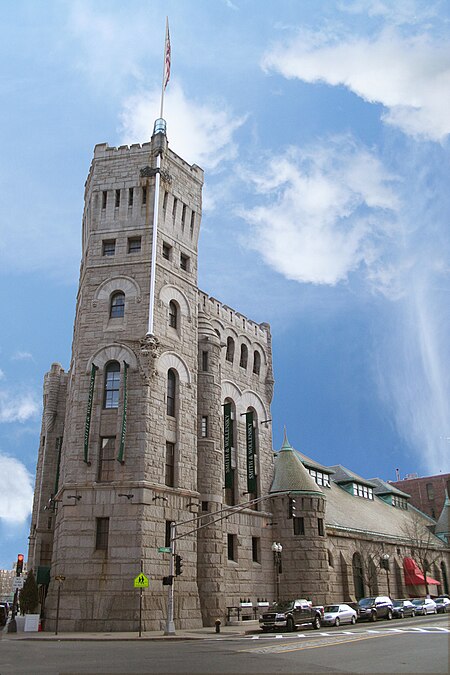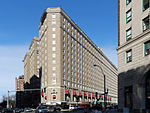Armory of the First Corps of Cadets

The Armory of the First Corps of Cadets (now known as The Saunders Castle) is a historic armory at 97–105 Arlington Street and 130 Columbus Avenue in Boston, Massachusetts. The four-story granite structure was designed by William Gibbons Preston and built beginning in 1891 and finished in 1897. Due to political unrest during the period, the building was designed to withstand mob violence. Its most prominent feature is its six-story tower. It is built in the Romanesque Revival style. The building's staircases are built by the Guastavino system, as are some tower vaults.In the late 1960s, the University of Massachusetts Boston leased the building and converted it into the university's first library. The building was listed on the National Register of Historic Places in 1973 and designated as a Boston Landmark by the Boston Landmarks Commission in 1977. Currently leased and managed by Saunders Real Estate, the building is now called The Saunders Castle at Park Plaza and is available for a wide variety of events, exhibitions and more.
Excerpt from the Wikipedia article Armory of the First Corps of Cadets (License: CC BY-SA 3.0, Authors, Images).Armory of the First Corps of Cadets
Arlington Street, Boston
Geographical coordinates (GPS) Address External links Nearby Places Show on map
Geographical coordinates (GPS)
| Latitude | Longitude |
|---|---|
| N 42.349675 ° | E -71.070013888889 ° |
Address
Armory of the First Corps of Cadets
Arlington Street
02117 Boston
Massachusetts, United States
Open on Google Maps








